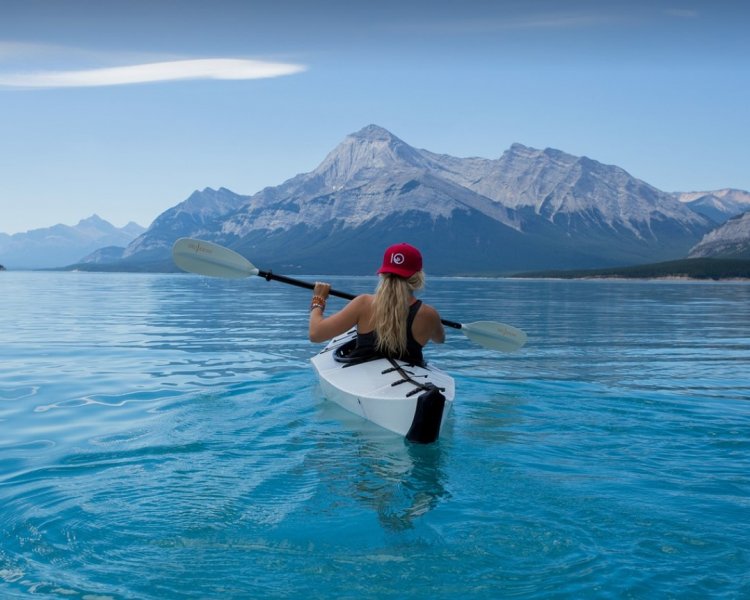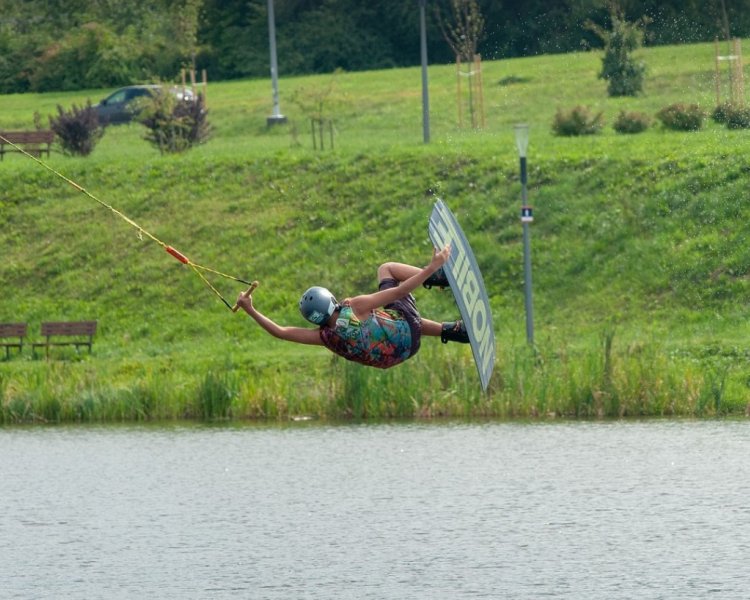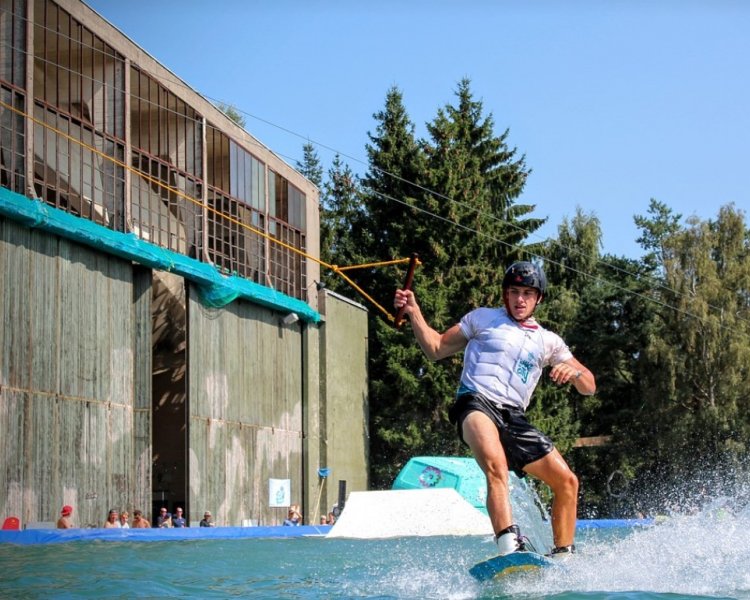This Is How Fast You Need To Go To Wakeboard! (Scary?)

Wakeboarding is a sport that took on major waves in the 1980’s and has only picked up speed since! If you’re a lover of surfing, jet-skiing, motorboating, tubing or other water sports – wakeboarding is the perfect fit for your adventure heart!
Before you hop on the board, this guide will give you all the tips on speed, maneuvering, and safety tips.
How fast do you need to go on a Wakeboard? The answer is, not very fast. Professionals may range from 25-35 mph and intermediate level Wakeboarders around 20-30. If you are a beginner, it is recommended to start out around 20 mph until you gain comfortability and the posture skills to stay balanced on this new board shape.
I know you want to gun the motor at full speed, but I’ll be honest with you – If you don’t know what you’re doing, you’ll just fall off.
Being patient with yourself is relevant to any new skill, not just learning new sports. Once you become familiar with the feel of the board and staying upright, the rest of these tips will become even more useful to you!
Read Also: Is Wakeboarding Dangerous?
So, How Fast Do You Need to Go to Wakeboard?
The tricky thing about putting the pedal to the medal right at the get-go is that you’re not used to cutting over the wake.
If you don’t know what cutting the wake is, you don’t need to be going over 30 mph anyways. Cutting the wake means cutting through the waves and learning to stay upright while slicing through them. The faster you go; the more waves will be thrown at you at a more rapid speed.
Starting out at around 20 mph is a great safe pace because you’ll gain familiarity while still having enough wave retention to not drag. If you’re dragging and feel the rope is too loose, make it tauter by having the driver speedup.
Negotiate signals with your driver before you get out on the water so you can let him know to speed up, slow down, or to stop. Be sure you’re both familiar before heading out, or it will be miscommunication-mania on the water.
As you improve, you’ll feel your confidence growing. Within the first ride, you may be speeding up to between 22-23 mph. This will greatly be affected by your age, size, the boat’s size, rope length, and just where you’re at in your adventure-seeking thrills!
If you’re an adrenaline-seeking junkie that has years of surfing and more comfortability on the water than on land – you may be ready to hit the 25-30 mph range.
I wouldn’t recommend faster than this unless you’re certain you’re far away from rocks or dangerous shallow waters, and you know what you’re doing.
Another key point is to never wakeboard at high speeds next to other boats. This could be dangerous to other boaters, and in 2017 there were nearly 700 deaths on the water in United States territory and over 3,000 injuries. These can be 100% prevented by using your head and simply not being careless.
Read Also: Wetsuits for Winter
How to Begin Wakeboarding
If the thought of hopping out on a busy sea of water enthusiasts scares you – start small.
Don’t rush the process and actually begin on land. In fact, this is how the inventor of the wakeboard worked through the kinks himself!
Tony Finn thought up the Wakeboard (which was then called the Skurfer because it was the combination of surfing and jet-skiing) started with his friends by dragging their surfboards down the beach with a pickup truck.
You can do something similar on land to get the hang of things. Lucky for you, now they’ve invented specific boards for wakeboarding that are ergonomic, resist the water tension, are much more buoyant and are lighter than surfboards for tricks, etc. – so the ride will be much easier than Tony Finn’s was!
Tape a large piece of cardboard to the bottom of your wakeboard and use the tow rope to be drug across the grass. The cardboard will protect the board and give you a bit more slippery slide as you skid across the yard.
The idea behind these practice rounds is that you learn how to stand and keep your balance in the sport. Being on water will be even more difficult, so try to master this skill before taking it to the lake or sea.
It will also help you acclimate to the unique board shape of the wakeboard, which has a sideways stance. After this, you can slowly start edging towards to water and beach, takin a ride that edges off the shoreline.
Now you’re ready to Wakeboard!
What will help a lot is building your core muscles. These are the muscles that hold all of your limbs upright, and your core is what will help you not fall in. If you can get the posture of a ballerina on land, that should convert to the water’s surface.
The correct body position and drills help you to adjust to the board’s balance, not fight it. This is the speediest path to success.
Tips Once You’re on the Water:
Now that you’ve practiced your form, I know you’re ready to throw around some tricks and flips like a sea-acrobat!
Here are some tips from the best to get the most out of your ride:
- If you’re looking for larger waves, put weights in the boat. This may burn a bit more gas, but some people don’t mind this. They want something real to ride on and adding more weight to your boat will create more displacement = more waves. Physics, gnarly bro!
- Use the rope to your advantage! If you’re landing flat every time, let the rope out a length to give yourself more slack to run free. If you’re coming up short, pull it in a few feet. The key here is to experiment as it will be different for each rider and their body mass/proportions.
- If you’re only thinking about a huge wake and how high it’s going to throw you in the air, chances are you’ll mess up on something in your approach. Don’t concern yourself with the wake size while starting out. Focus on how the board feels and reacts to you as you pivot and slice up the water. The fundamentals are key to any sport before you try to get fancy.
- Even the professionals stay around 30 mph and don’t go much beyond this. Keep that in mind if you feel like 19-20 mph is too slow for you.
- Remember that each boat is different so you’ll need to pay attention to rope slack, how it feels on the ride, boat weight, etc. 23 mph on one boat may feel completely different than 23 mph on another. Find the right balance for you.
Lastly, I’ll end with always keep your life jacket on. It’s boring and makes me sound like a mom, but you read the death toll and injury statistics above.
Around 85% of them were not wearing a lifejacket. Bet they wish they could make that decision over again and choose correctly this time.
Wakeboarding is about the freedom on the water and having fun! Get out there and don’t beat yourself up for not being perfect at something right out of the gate. We all know that would be boring anyway and challenging yourself is a huge chunk of the fun!
Fall down, get back up, and ride that wake like we know you were born to!
...



